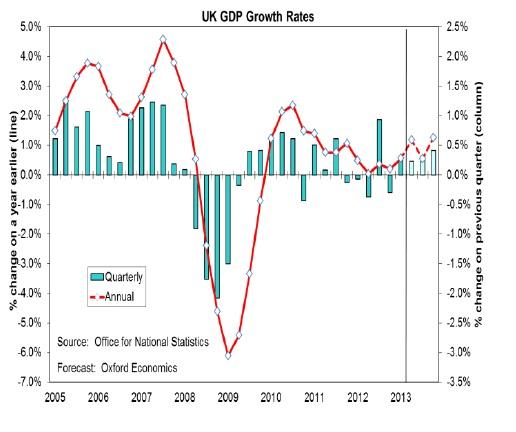European Industrial Production, February 2022: Figures released by Eurostat this week showed total industrial production in the Euro-zone was +0.7% higher than in January while the EU as a whole showed a rise of +0.6%. This means that growth over the past 12 months (since February 2021) was +2.0% in the Euro-zone and +3.0% for the EU. This highlights a better recovery for industrial production outside of the Euro-zone; the gap actually starts to be noticeable back in 2017 and persisted in the initial recovery from the Covid pandemic but there is a noticeable widening of the gap since the start of 2021.
The only breakdown of the data by type of industry is at the sub-sector level; here, we find that output of capital goods (the area of most interest to us) in the Euro-zone fell by -0.1% compared to January, although it was unchanged in the EU; this is the weakest sub-sector apart from energy in both cases with the durable goods sub-sector leading the way with growth of +2.7% in the Euro-zone and +2.4% in the EU.
Looking back to February 2021, the capital goods sub-sector is the weakest of all the groups and is the only one where output is lower than a year ago with a fall of -3.1% in the Euro-zone and -2.1% in the EU. In this case, the best performing sector is non-durable goods (things like food and drink which are consumed soon after purchase) but the durable goods sub-sector has also shown strong growth with an increase of +5.8% for the Euro-zone and +6.3% for the EU. We see the same effect of a stronger position for the EU than in the sub-set of Euro-zone countries in all of the sub-sectors.
Looking at the individual countries, total industrial production compared to February 2021 increased in 19 of the member states and declined in 7 (data for Cyprus is not yet available). There are some large movements in both directions with the largest reductions seen in Ireland (-14.1%) and Portugal (-5.7%), while the largest percentage improvements came in Lithuania (+20.4%), Poland (+17.8%), Bulgaria (+14.4%), Austria (+14.0%) and Denmark (+13.9%) – the impact of lockdowns a year earlier may be reflected in these trends, especially for countries with a large increase in industrial production.
It is worth noting that industrial production is dominated by manufacturing but it also includes output of the extraction industries (mining & quarrying) and utilities (supply of electricity, gas & water).
You can download the euro-indicators bulletin from the Eurostat website at https://ec.europa.eu/eurostat/news/euro-indicators (20 April) or request it from MTA.
International Data Exchange, 2021: CECIMO – the European grouping of associations for machine tool manufacturers – has coordinated an exchange of data for the machine tool industry. The report covers 12 European countries, 4 in Asia and the USA. For confidentiality reasons, this is only available to members so if you would like a copy of the file, please contact Geoff Noon at MTA (email: geoff.noon@mta.org.uk) and we will send it to you.

